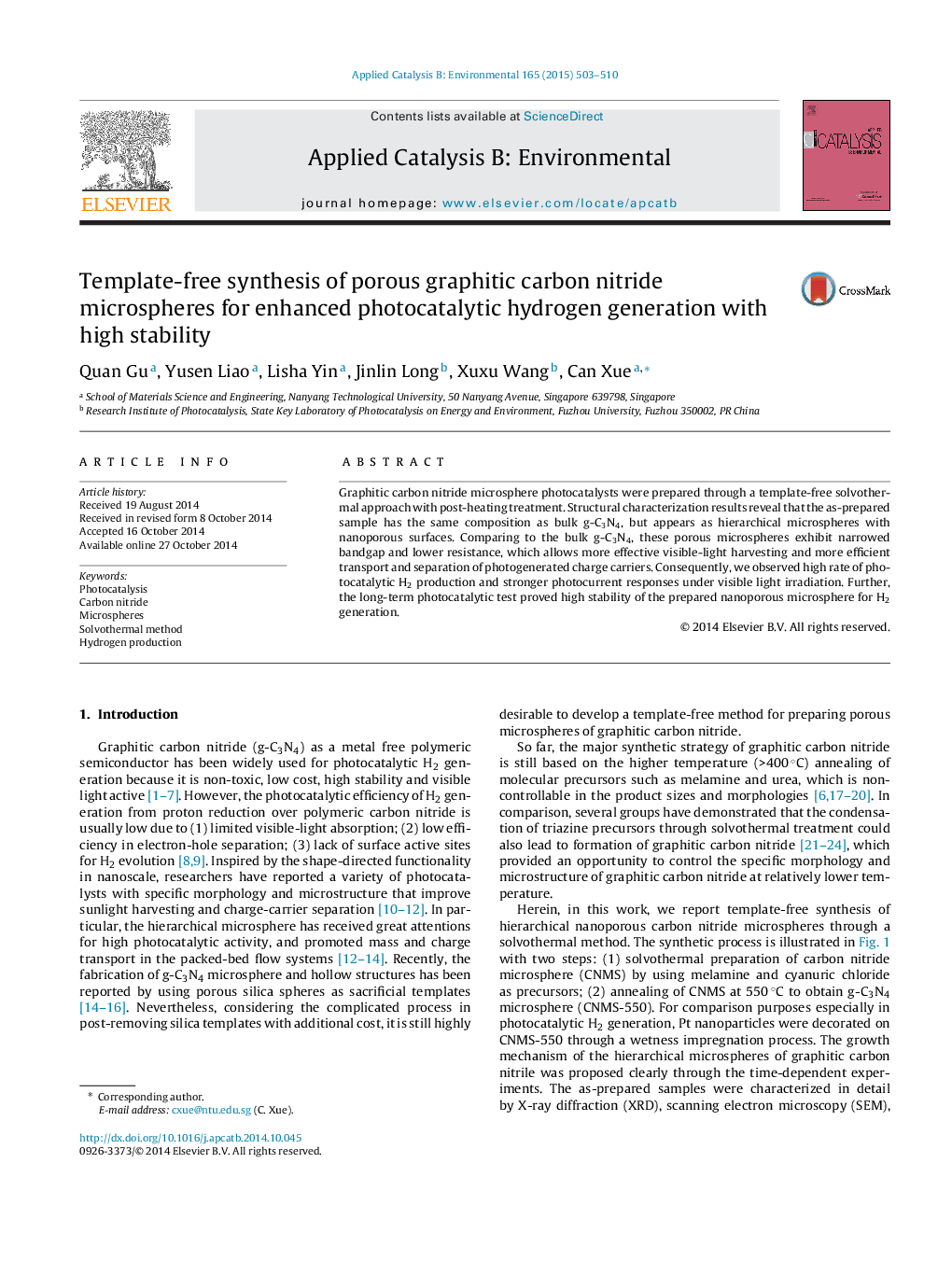| Article ID | Journal | Published Year | Pages | File Type |
|---|---|---|---|---|
| 45581 | Applied Catalysis B: Environmental | 2015 | 8 Pages |
•g-C3N4 microspheres were prepared via a solvothermal method for the first time.•Growth of g-C3N4 microspheres follows the Oswald ripening and self-assembly.•g-C3N4 microspheres display more effective visible light harvesting.•Hierarchical structure allows more efficient charge transport and separation.•g-C3N4 microspheres shows enhanced H2 generation with high stability.
Graphitic carbon nitride microsphere photocatalysts were prepared through a template-free solvothermal approach with post-heating treatment. Structural characterization results reveal that the as-prepared sample has the same composition as bulk g-C3N4, but appears as hierarchical microspheres with nanoporous surfaces. Comparing to the bulk g-C3N4, these porous microspheres exhibit narrowed bandgap and lower resistance, which allows more effective visible-light harvesting and more efficient transport and separation of photogenerated charge carriers. Consequently, we observed high rate of photocatalytic H2 production and stronger photocurrent responses under visible light irradiation. Further, the long-term photocatalytic test proved high stability of the prepared nanoporous microsphere for H2 generation.
Graphical abstractFigure optionsDownload full-size imageDownload as PowerPoint slide
